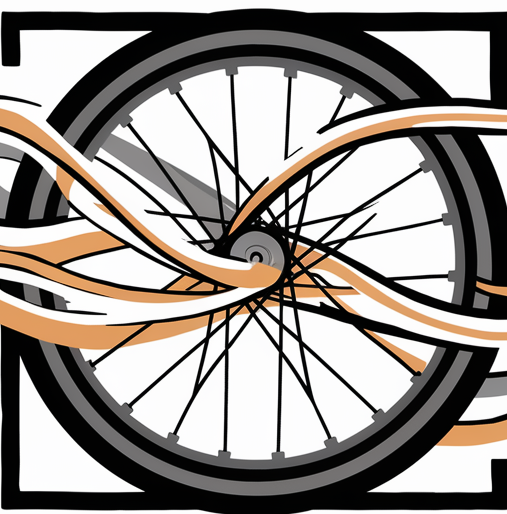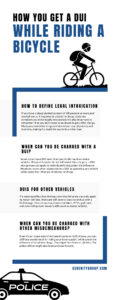How fast can a bicycle go downhill? It’s a question many cyclists wonder about.
The answer depends on several factors. Cycling downhill can be thrilling and fast. Gravity helps you gain speed, and the experience can be exhilarating. But how fast can you actually go? Factors like the slope, wind resistance, and your bike’s design come into play.
Professional cyclists can reach speeds over 60 mph on steep descents. For most riders, speeds of 20-30 mph are more common. Understanding these speeds can help you stay safe and enjoy the ride. This blog will explore the factors affecting downhill speed and offer tips for a safe descent. So, let’s dive in and see how fast you can really go on a bike downhill!

Credit: texastailwind.wordpress.com
The Mechanics Of Speed
Exploring the thrill of downhill biking, cyclists can reach impressive speeds. Gravity accelerates bikes to over 50 mph on steep slopes. Factors like rider weight, slope angle, and bike type influence speed dynamics.
The thrill of speeding downhill on a bicycle is unmatched, but have you ever wondered how fast a bicycle can really go? The mechanics of speed when descending involve various factors that work together to propel you faster than you might expect. Understanding these elements can not only enhance your riding experience but also improve your safety and performance.Gravity’s Role
Gravity is the invisible force that accelerates your bike as you descend. The steeper the hill, the stronger the pull. This natural force makes descending feel effortless, pushing you faster without pedaling. As you ride downhill, your weight also plays a crucial role. Heavier riders often gain speed quicker due to increased gravitational pull. However, this doesn’t mean lighter riders can’t go fast—technique and position matter. Have you noticed how cyclists often crouch low? This position helps in harnessing gravity effectively. By lowering your center of gravity, you gain stability and speed. How do you position yourself when descending?Aerodynamics And Design
Aerodynamics is about how easily your bike cuts through the air. A streamlined shape reduces drag, allowing you to glide faster. That’s why cyclists wear tight clothing and tuck their bodies in. The design of your bike can significantly impact your speed. Bikes designed for racing often have a more aerodynamic frame. They minimize resistance, allowing you to take full advantage of downhill momentum. Wheel design also matters. Slim, smooth tires create less friction, boosting speed. Next time you ride downhill, observe how your bike’s design influences your speed. Can you feel the difference in air resistance? Remember, each element of your bike and posture plays a part in the exhilarating dance of descending. Are you ready to embrace the mechanics of speed on your next ride?
Credit: www.pinkbike.com
Record-breaking Descents
Downhill cycling offers thrilling speed and excitement. Cyclists push limits on steep slopes. Record-breaking descents show how fast a bicycle can go downhill.
Famous Speed Records
The highest recorded speed on a bicycle downhill is astounding. In 2018, Eric Barone reached 227.72 km/h. This feat took place on a snowy slope in France. The conditions were extreme and required skill and bravery.
Another record was set by Fred Rompelberg in 1995. He rode at 268.831 km/h. He achieved this speed behind a dragster on Utah’s Bonneville Salt Flats. This record stood for over 20 years.
Notable Cyclists Achievements
Several cyclists have made a mark in downhill speed. Markus Stöckl is one of them. In 2017, he reached 167.6 km/h on gravel in Chile’s Atacama Desert. Markus is known for his fearless descents.
Valentina Höll is another cyclist worth noting. As a teenager, she set junior downhill records. Her skills and speed promise a bright future in the sport.
These record-breaking descents inspire others. They show what determination and courage can achieve.
Factors Affecting Downhill Speed
Bicycle downhill speed depends on several factors. Rider’s weight plays a crucial role in acceleration. Steepness and surface condition of the slope significantly influence speed. Wind resistance can slow down the ride, while aerodynamic posture helps maintain momentum.
Riding a bicycle downhill can be an exhilarating experience, filled with both thrill and challenge. However, the speed you achieve is not just about gravity doing its job. There are several factors that play a crucial role in determining how fast you can actually go. Understanding these can not only enhance your ride but also ensure your safety. Let’s dive into the key factors that affect downhill speed.Terrain And Gradient
The nature of the terrain and the gradient of the hill are primary influencers of downhill speed. A smooth, paved road allows for faster speeds compared to rough, rocky paths. Imagine riding down a freshly laid asphalt road versus a bumpy dirt trail; the difference is significant. The gradient, or the steepness of the hill, also impacts how fast you descend. Steeper gradients can propel you faster, but they also demand better control and skill. Have you ever felt your heart race as you approached a steep slope? That’s the gradient inviting you to an adrenaline-filled ride while challenging your biking prowess.Bike Specifications
Your bike’s design and components play a critical role in your downhill speed. A lightweight frame can reduce resistance, allowing you to pick up speed quickly. A road bike, with its sleek build, will generally descend faster than a mountain bike designed for stability. The tires are equally important. Wider tires with deep treads offer more grip, which is essential for rough terrain but can slow you down on smooth surfaces. On the other hand, narrow tires on a road bike reduce friction, helping you achieve higher speeds. Consider the gearing system, too. A bike with the right gear ratios lets you maintain control while still maximizing speed. Think about how easily you can switch gears to adapt to changing slopes; it’s a game-changer in achieving that perfect balance of speed and safety. Understanding these factors can transform your downhill biking experience. What changes can you make to your current setup for a faster and safer ride?Safety Measures
Cycling downhill can reach speeds over 40 mph. Proper safety measures are crucial. Wear helmets, check brakes, and ensure tires are in good condition. Always stay alert to road conditions and traffic.
Racing downhill on a bicycle can be thrilling, but safety should always come first. As speeds increase, so do the risks. To keep yourself safe while enjoying the ride, consider these crucial safety measures.Protective Gear
Wearing the right protective gear is essential. A helmet is non-negotiable. It protects your head from serious injuries. Make sure it fits snugly and is certified for downhill riding. Gloves can help you maintain grip and protect your hands from scrapes. Also, consider wearing knee and elbow pads. They can cushion falls and prevent bruises. Reflective clothing helps others see you. It’s especially useful if you’re riding in low light conditions. Visibility can prevent accidents.Handling Techniques
How you handle your bike affects your safety. Keep your body relaxed. Tension can lead to mistakes and slow your reaction time. Practice shifting your weight. Leaning into turns can improve balance and control. It can also reduce the chance of skidding. Brake early and smoothly. Sudden braking can lead to loss of control. Use both the front and rear brakes for stability.Safety is not just about gear or technique; it’s a mindset. Are you prepared to sacrifice speed for safety? Your decisions on the hill can impact not only your ride but also your future rides.
Environmental Impact
Bicycling downhill is thrilling. But the environment greatly influences speed. Factors like weather and natural obstacles play a crucial role. They can either help or hinder a cyclist’s descent. Understanding these elements can enhance your biking experience. It can also ensure safety and enjoyment.
Weather Conditions
Weather can change your biking speed dramatically. Rain makes roads slippery, slowing you down. Wet roads increase the risk of skidding. Strong winds can either push you forward or hold you back. Tailwinds boost speed, while headwinds reduce it. Cold weather affects tire pressure. It may lower your speed as well. Always check weather forecasts before a ride.
Natural Obstacles
Natural obstacles are another factor to consider. Rocks and debris can cause sudden stops. They might lead to accidents if not avoided. Trees and bushes can obstruct views. Limited visibility may slow you down for safety. Wildlife crossings are unpredictable. Deer or other animals can dart across your path. Stay alert to avoid collisions. Choose clear paths for a safer descent.
Training For Speed
Bicycles can reach impressive speeds downhill, often exceeding 40 mph. Factors like rider skill, bike type, and terrain steepness impact this. Enthusiasts often seek thrilling descents, pushing limits safely and enjoying the adrenaline rush.
Training for speed on a bicycle, especially downhill, is both exhilarating and demanding. The thrill of racing down a slope is matched by the effort needed to prepare your body and mind. Achieving those top speeds isn’t just about having the best gear; it’s about honing your strength, endurance, and mental fortitude. Let’s dive into some practical ways you can train to become a speed demon on two wheels.Strength And Endurance
Building strength is crucial for maintaining control at high speeds. Focus on your core, legs, and upper body to ensure stability. Incorporate exercises like squats, lunges, and planks into your routine. These exercises will give you the power needed to handle steep descents confidently. Endurance training is equally important. Long rides at varying paces improve your stamina and cardiovascular health. Try interval training, alternating between high-intensity bursts and moderate cruising. This will help you sustain energy during those long downhill treks.Mental Preparation
Riding downhill at high speeds isn’t just a physical challenge—it’s a mental one too. Visualize your route and anticipate potential obstacles. This mental rehearsal can sharpen your reactions and boost your confidence. Fear is natural, but overcoming it can be your greatest ally. Start with smaller hills and gradually tackle steeper ones. Each successful ride builds your mental resilience. Ask yourself, how comfortable are you with pushing your limits? Your mindset can make or break your downhill performance. Stay focused, trust your instincts, and always prioritize safety. This mental discipline will transform your speed training from daunting to exhilarating.Technological Innovations
When you think of the thrill of speeding downhill on a bicycle, it’s hard not to imagine the wind rushing past and the adrenaline pumping through your veins. But how fast can a bicycle really go downhill? Technological innovations have transformed this experience, allowing cyclists to push the limits safely and efficiently.
Advanced Bike Features
Modern bikes are equipped with cutting-edge features designed to enhance speed and control. Lightweight carbon frames reduce resistance and improve agility. High-performance wheels and aerodynamic designs can significantly increase speed. Imagine riding a bike with gears that adjust seamlessly as you tackle a steep descent.
Suspension systems have evolved too. They absorb shock and maintain stability even at high speeds. If you’ve ever felt your bike wobble on a rough downhill, you know the importance of a good suspension. These features can be game-changers when you’re aiming to beat your personal record.
Speed Monitoring Tools
Tracking your speed is more accessible than ever with advanced monitoring tools. Devices like GPS-enabled bike computers give real-time data on your velocity. You can even sync them with your smartphone for detailed analysis. Imagine knowing exactly how fast you’re going without having to guess or rely on roadside signs.
Apps can track your progress, compare past rides, and even alert you when you hit new speed records. Have you ever wondered if you’ve reached your top speed? These tools can answer that question instantly. The insights they provide can help you adjust your technique and improve your performance.
Thinking about safety, these tools also offer features like alerting you of sharp turns or obstacles ahead. How often do you think about the terrain when you’re focused on speed? With these innovations, you can concentrate on the thrill while staying safe.
With these technological advancements, riding downhill becomes not just an adventure, but a science. What’s your fastest downhill experience? Could these innovations help you break that record?
The Thrill Of The Ride
Rushing downhill on a bicycle brings an unparalleled rush of excitement. The wind in your hair, the blur of scenery, it’s pure exhilaration. Gravity takes over, pulling you faster and faster. Every curve and bend requires focus and skill. The thrill of speed captivates many cyclists worldwide. It’s an adrenaline rush that keeps riders coming back.
Psychological Effects
The thrill of downhill cycling affects the mind. Speed triggers adrenaline, boosting alertness and excitement. The heart races, and senses heighten. Cyclists often feel a sense of freedom and euphoria. The brain releases dopamine, enhancing pleasure and satisfaction. The experience can become addictive. Many riders seek this rush repeatedly.
Community And Culture
Downhill cycling has a vibrant community. Riders share a bond over their shared passion. Events and competitions bring enthusiasts together. It’s a culture where speed and skill are celebrated. Knowledge and experiences are shared among cyclists. This community fosters friendships and camaraderie. Riders often join clubs or online groups. They exchange tips, gear reviews, and route recommendations. The thrill of downhill cycling unites people globally.

Credit: www.youtube.com
Frequently Asked Questions
How Fast Do Pro Cyclists Go Downhill?
Pro cyclists can reach speeds of 50-65 mph (80-105 km/h) downhill. Skilled handling and aerodynamics aid in achieving these speeds.
What Is The Max Speed For A Downhill Bike?
A downhill bike can reach speeds of up to 60 mph (96 km/h) on steep, straight descents.
Is 20 Mph Fast On A Bike?
Riding a bike at 20 mph is considered fast for recreational cyclists. Many casual riders average 12-15 mph. Skilled cyclists often maintain speeds around 20 mph, especially on flat terrain. Remember, speed varies with fitness level, bike type, and road conditions.
Always prioritize safety and wear appropriate gear.
How Fast Can You Go Downhill?
The speed downhill can vary. Skilled cyclists can reach up to 50-60 mph. Safety and terrain affect the speed.
Conclusion
A bicycle’s downhill speed depends on various factors. Rider’s skills, bike type, and terrain play key roles. Safety gear is crucial for high-speed descents. Always check your bike before any downhill ride. Enjoy the thrill but prioritize safety. Proper technique enhances speed and control.
Practice regularly to improve. Downhill biking offers excitement and adventure. Embrace the challenge and have fun.



